If you’ve got hair, then you’ve probably noticed small specks of dandruff on your shoulders once in a while. Dandruff consists of dead skin cells that flake off of your scalp. It’s a natural process and, usually, it’s no big deal. Fur-bearing pets get dandruff, too! You may see some dandruff on your cat. However, cat dandruff can be a sign that something else is going on with your pet’s health. Let’s look at some of the reasons why your cat has dandruff and what you can do about it.
1. Arthritis
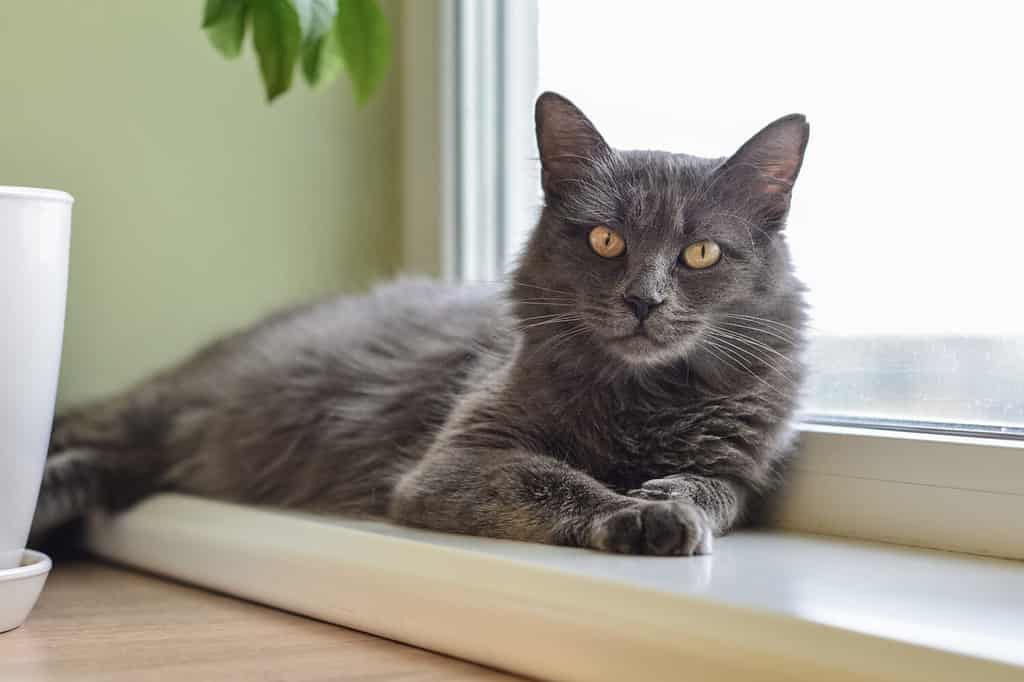
Cats with arthritis exhibit slower movement and reaction times.
©mama_mia/Shutterstock.com
Pet owners may have a difficult time ascertaining when their cats are in pain. Cats instinctively try to hide their discomfort as a defense mechanism. Arthritis causes the degeneration of the cartilage that cushions the joints, making it difficult for cats to move. That painful movement can affect how often and how well your cat grooms itself. If your cat cannot properly clean itself, then you’ll see dandruff and other skin issues appear. Your local veterinarian can develop a treatment program for your arthritic cat.
2. Obesity
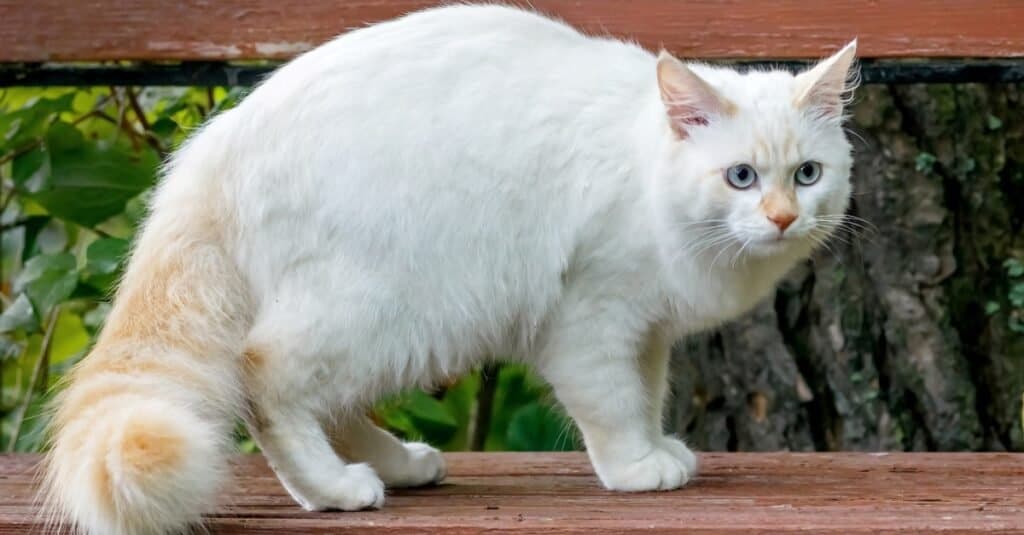
Roughly 55 percent of cats in the U.S. are overweight.
©Vadim Petrakov/Shutterstock.com
Overweight cats have a difficult time getting around. Excess weight is hard on a cat’s joints and circulatory system. It can also affect how they groom themselves. After all, if a cat can’t bend its neck far enough to reach certain parts of their coat with its tongue, then it won’t get clean! An inability to groom can lead to dry skin and dandruff. Combing or brushing your cat’s fur will make your cat feel better. Ask your veterinarian how to institute dietary changes to help your cat attain a healthy weight.
3. Thick Undercoat
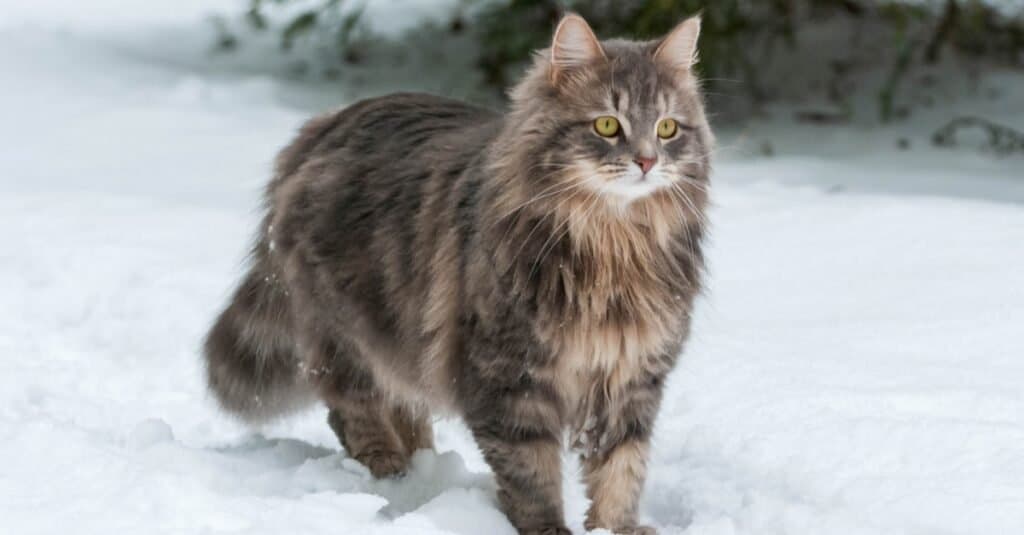
Siberian cats shed in the winter and spring.
©Emil Helge/Shutterstock.com
Some cats, particularly ones bred for cold weather like Persians or Siberians, have an extra layer of fur called the undercoat. The undercoat gives cats added protection against the elements. However, it can be difficult for cats to groom this excess fur, leading to dandruff and other negative skin conditions. Helping your cat by combing their fur reduces the chances of cats with those thicker coats developing dandruff.
4. Allergies
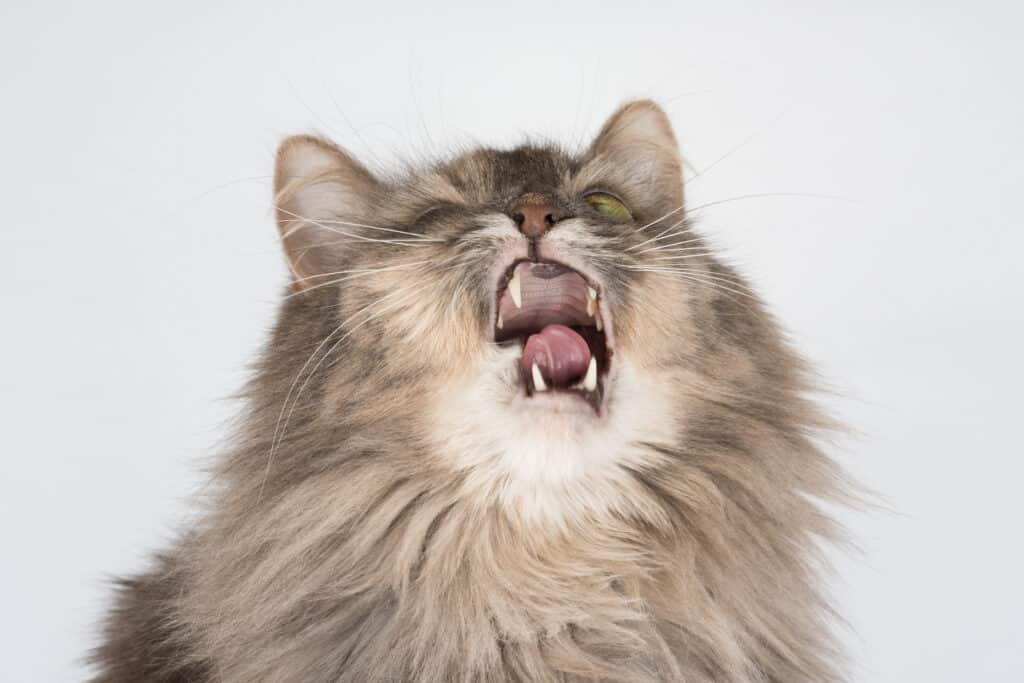
Even indoor cats can be allergic to pollen.
©ZlataMarka/Shutterstock.com
It’s common to hear about people having allergies, but cats can get them as well! Cats are susceptible to seasonal allergies. Some cats suffer from food allergies, as well. Allergies can make cats wheeze, sneeze, and get watery eyes. Their skin can also be affected by allergic reactions, causing itching, dry skin, and dandruff. Determining the cause of your cat’s allergies is crucial to relieving the problem. Your veterinarian can help you narrow down the source of your cat’s discomfort.
5. Fleas
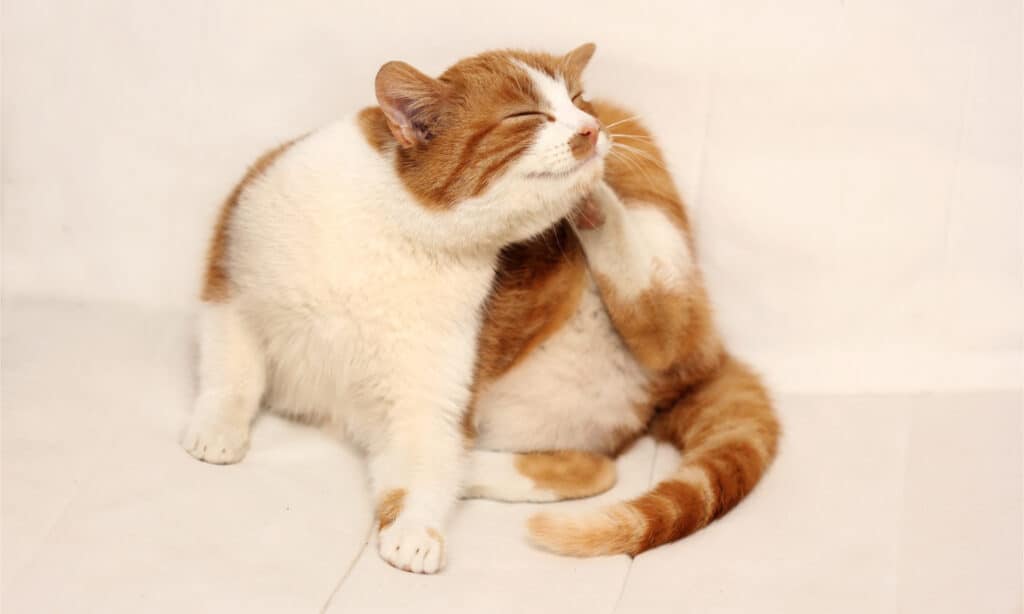
Fleas can jump as far as seven feet!
©Natata/Shutterstock.com
The bane of pet owners everywhere, fleas can make your cat miserable. Bloodsucking pests, fleas work their way down through the fur to a cat’s bare skin. Then, fleas use a mosquito-like proboscis to “bite” the cat and feed on its blood. The bite area itches, causing the cat to scratch furiously. With the skin around the bite abraded and irritated, dandruff can be a by-product of dry skin and scratching. Bathing your cat with a medicated shampoo can alleviate the flea situation, as can placing a flea collar around your cat’s neck.
6. Mites

Cats will lick areas of their skin where mites have taken up residence.
©Konstantin Aksenov/iStock via Getty Images
If you think you see dandruff on your cat’s back moving about by itself, you may not be hallucinating. Your cat may have picked up some Cheyletiella mites. These mites cause a type of mange called cheyletiellosis, also known as “walking dandruff.” Cheyletiellosis causes excessive amounts of dandruff to be produced. Because the Cheyletiella mites move around under the scales of a cat’s skin, the large flakes of dead skin appear to be moving as well. Other symptoms may include hair loss and sores. Consult your veterinarian if you suspect your cat has cheyletiellosis. The disease is highly contagious and can pass to other animals, as well as humans.
7. Ringworm
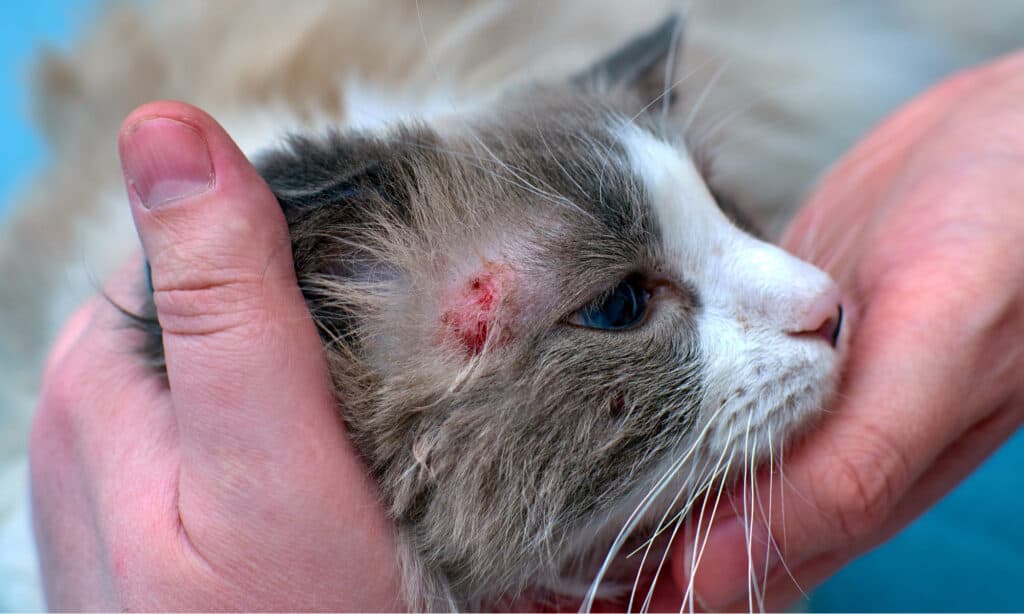
Common ringworm infection sites include the cat’s face and feet.
©eremeevdv/Shutterstock.com
Ringworm has nothing to do with worms! Also known as dermatophytosis, ringworm is a fungal infection spread by spores called dermatophytes. Your cat may get ringworm after exposure to the dermatophytes from surfaces where the spores live, like blankets or towels, or from other infected animals. Ringworm displays as a raised lesion in a round shape. Infected areas may become hairless as flaky, crusty skin develops around the lesions. Consult your veterinarian if you notice those telltale ringworm spots on your cat.
8. Cancer
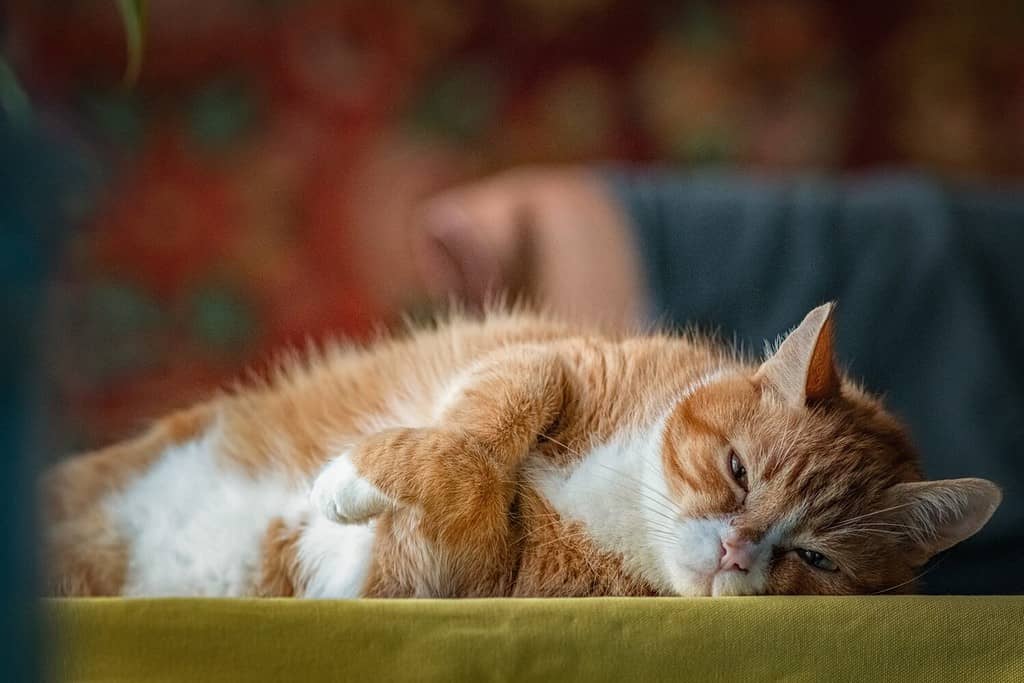
Terminally ill cats need special care and attention from their owners.
©shymar27/Shutterstock.com
Numerous physical symptoms indicate that a cat has developed cancer. One of those signs is an overabundance of dandruff. Cancer breaks down the immune system, allowing lumps of dead skin cells to collect and clump together. Sometimes, cancer causes pain in specific areas. Your cat may not be able to groom properly because it hurts them to do so. If you suspect your cat has cancer, consult your veterinarian to determine a course of action.
9. Malnutrition

Without the proper nutrition, cats can develop flaky skin.
©Lightspruch/Shutterstock.com
Just like humans, cats need proper nutrition to maintain their health. If cats don’t get the right amount of minerals, fats, and proteins, they can become ill. A poor diet can lead to, among other things, dry skin which can lead to an excess amount of dandruff. Diets lacking in minerals like zinc and copper can lead to cracked and flaky skin. Omega-3 oils help keep your cat’s skin and coat in good condition. Using a high-quality pet food with the correct proportions of nutrients is essential to keeping your cat’s skin healthy.
10. Hyperthyroidism
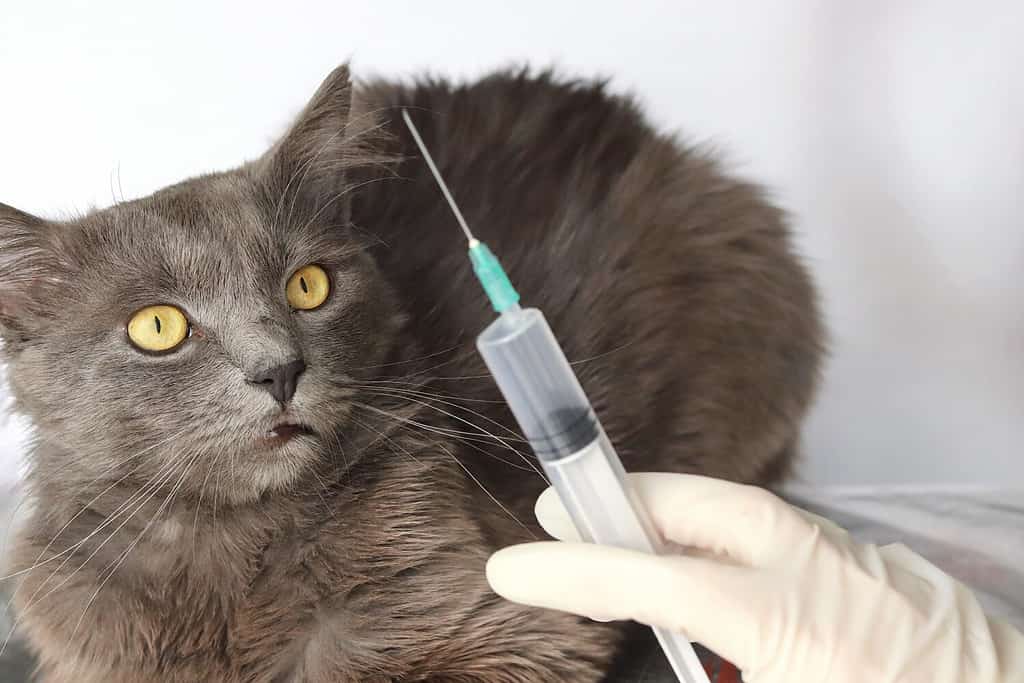
Medication is one option for treating hyperthyroidism.
©Alesia Fes/Shutterstock.com
Imbalances in the thyroid gland cause various problems for cats. Hyperthyroidism causes the thyroid gland to produce more of the hormone, thyroxine. This natural chemical helps regulate your cat’s metabolism. When there’s too much thyroxine in your cat’s system, it can develop dry skin and dandruff. You may also notice a loss in muscle tone and shininess in the coat. Your veterinarian can test your cat for hyperthyroidism and, if necessary, develop a treatment plan.
11. Dry Air

Keeping the air moist in your home can reduce the amount of fur your cat sheds.
©Shebeko/Shutterstock.com
Humidity levels in your home don’t only affect your comfort, but that of your pets. Indoor cats, especially in a non-humid environment, can develop dandruff. If the air in your home is too dry, it can aggravate your pet’s pre-existing dry skin condition. This particularly happens during the colder months. Central heat or warm air from a fireplace decreases the amount of moisture in the air. It also makes your cat’s skin dry!
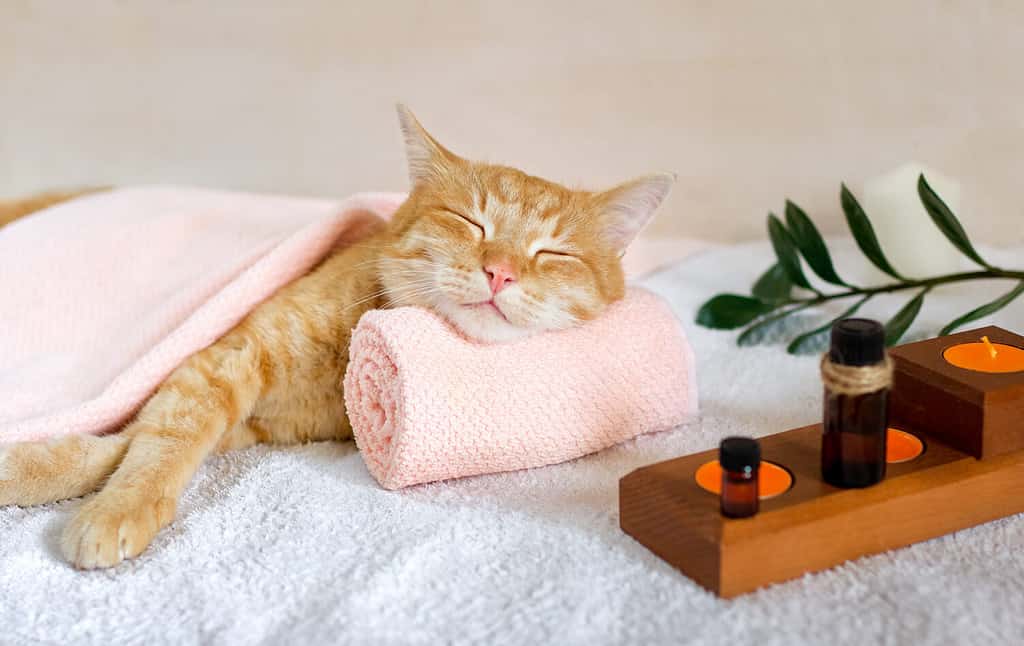
There are ways to help keep your dandruff-afflicted cat comfortable.
©Olga Smolyak/Shutterstock.com
What You Can Do
As a pet owner, there are steps you can take to help your cat deal with its dandruff problem. If you are concerned about your cat’s skin condition or its overall health, schedule a check-up with your veterinarian.
Give Your Cat the Right Food
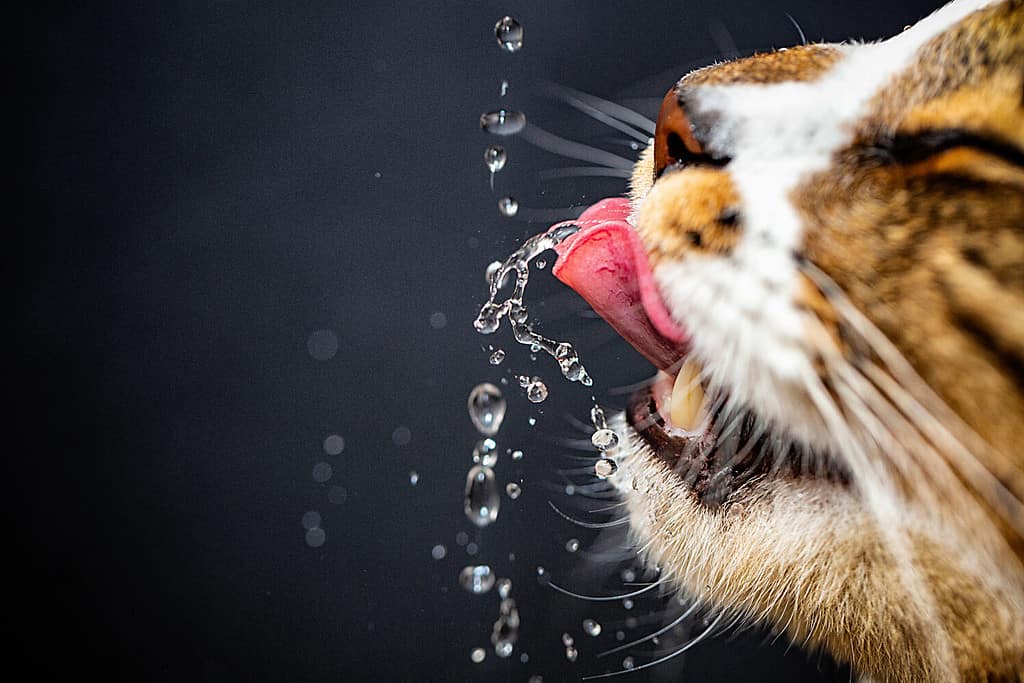
Clean fresh water does wonders for a cat’s skin!
©AltamashUrooj/Shutterstock.com
Like any living creature, a proper diet is essential to stay healthy! What your cat consumes affects the health of its skin. Make sure they are getting enough essential vitamins, minerals, proteins, and fats from their food. Keeping their water bowls or fountains filled with fresh water to drink helps them achieve the proper hydration levels needed for healthy skin.
Set a Grooming Schedule

Brushing your cat helps remove dead hairs and reduces fur matting.
©Creative Cat Studio/Shutterstock.com
Running a comb or brush through your cat’s fur on a regular basis gets rid of dead hair. Removing that fur thins the coat, helping your cat groom itself at the skin level. Regular grooming helps distribute the cat’s natural oils throughout its fur while keeping the skin soft and pliable. Most cats only need to be combed once a week but certain breeds, such as long-haired cats, require it more often.
Try a Dandruff Shampoo
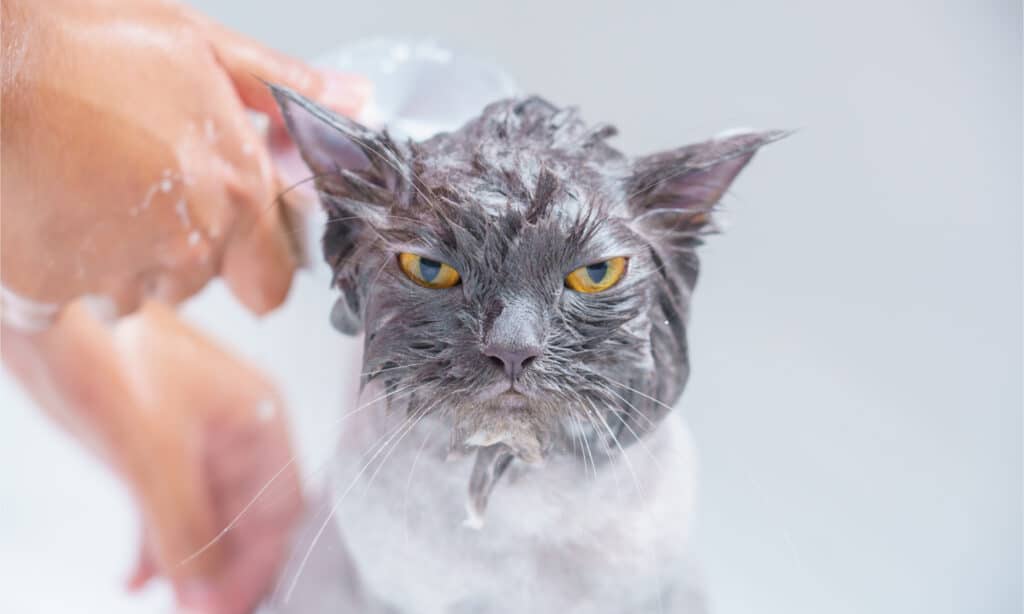
Wet cat fur takes a long time to dry and can make the animal feel cold and uncomfortable.
©BBbirdZ/Shutterstock.com
Most cats are not fans of water, which can make giving them a bath a chore! It may not be much fun to bathe a cat, but using a medicated shampoo could help reduce the amount of dandruff your cat produces. There are many brands to choose from at pet stores or grocery stores. Check with your veterinarian to ensure you’re using the right product for your cat.
Use A Humidifier
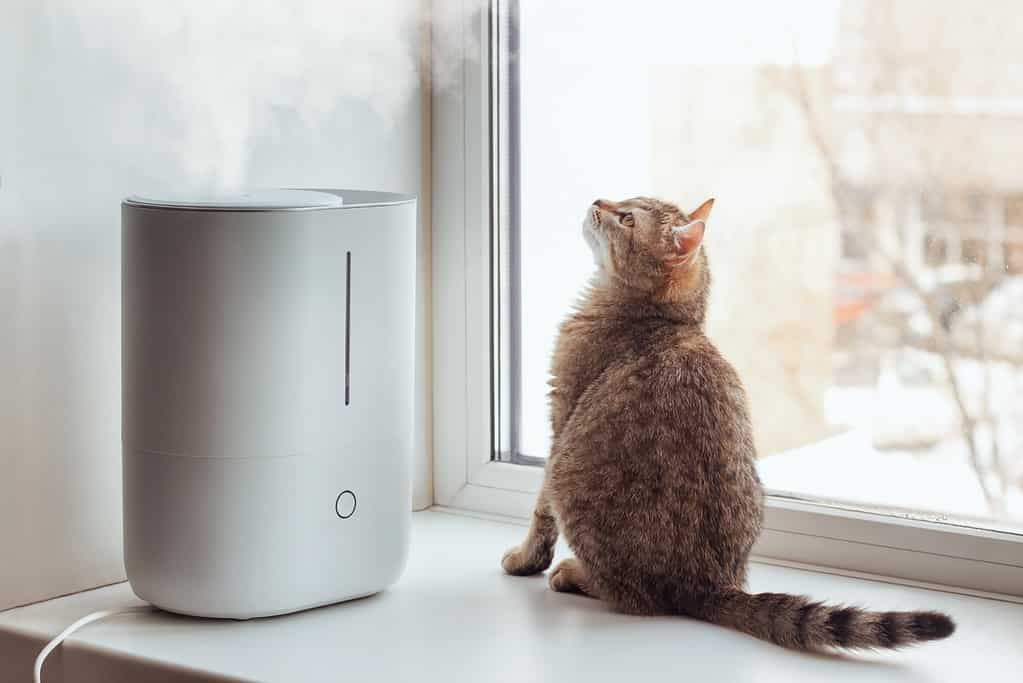
Humidifiers help reduce several health risks for your cat besides dry skin!
©Marina Demeshko/Shutterstock.com
Running a humidifier in your home reduces the risk of your cat developing dandruff by keeping the air moist. That helps your cat’s skin and fur remain soft. Humidifiers can also help ease the symptoms of some allergies! Allergic reactions can make your cat’s skin dry, creating a dandruff issue or worsening a pre-existing skin condition. You may enjoy the benefits a humidifier can bring to your home as well!
Summary of 11 Reasons Cats Have Dandruff
| Number | Reasons |
|---|---|
| 1 | Arthritis |
| 2 | Obesity |
| 3 | Thick Undercoat |
| 4 | Allergies |
| 5 | Fleas |
| 6 | Mites |
| 7 | Ringworm |
| 8 | Cancer |
| 9 | Malnutrition |
| 10 | Hyperthyroidism |
| 11 | Dry Air |
Thank you for reading! Have some feedback for us? Contact the AZ Animals editorial team.








